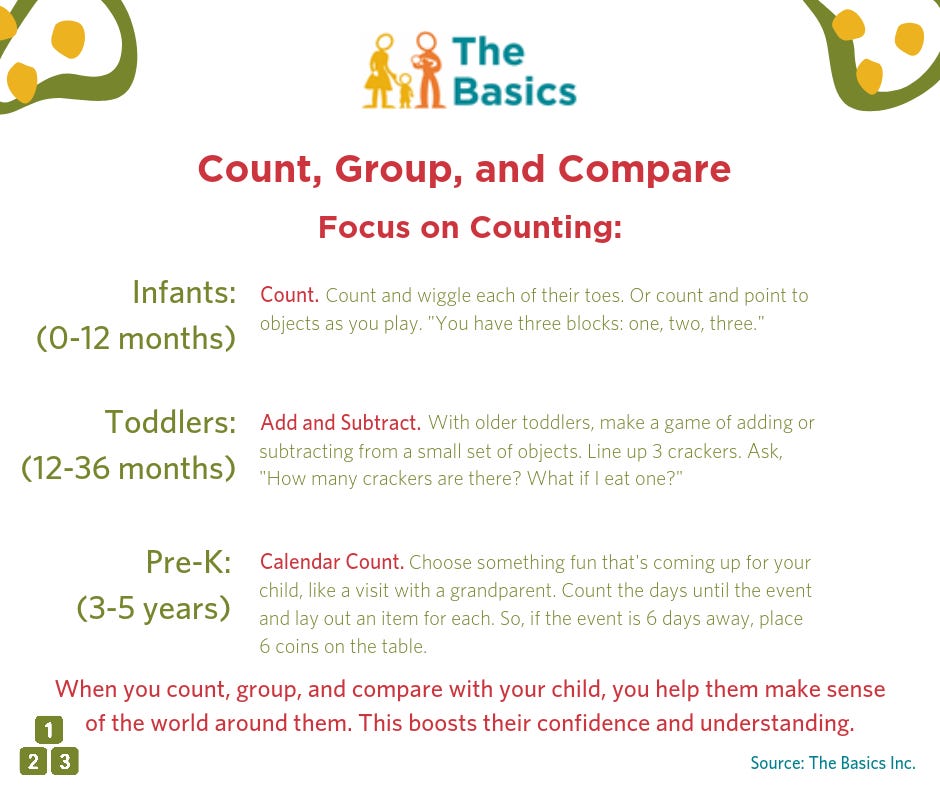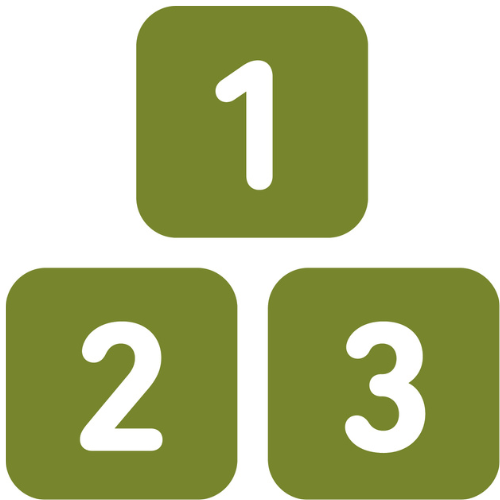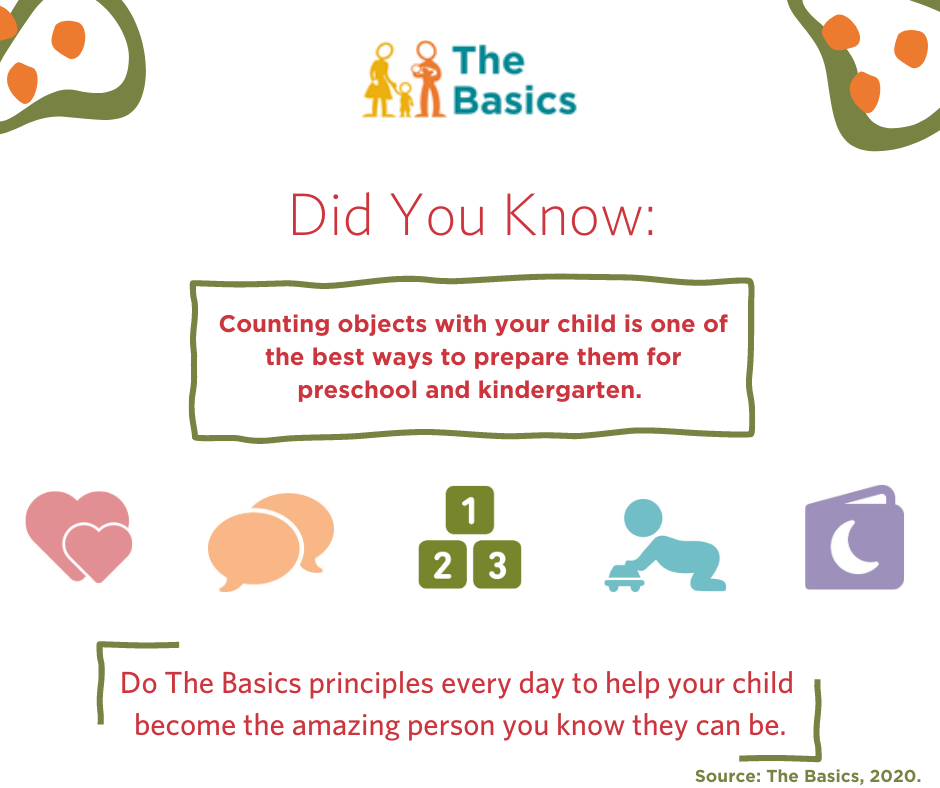Optimization Alert: Let's Improve Our Number Talk.
Early parent-child number talk is predictive of mathematical outcomes that persist through elementary school and beyond.
For the next few weeks, our focus is on The Basics Principle: Count, Group, and Compare. The Basics Principles are a set of 5 parenting strategies designed to increase school readiness and improve family and child social and emotional well-being. It is a nationwide project founded at The Harvard Achievement Gap Institute. For more information, head over to their website.
Counting: The original 3-in-1 baby device that you really *MUST* have.
Counting with your child is yet another opportunity for 'joint connection:’ where both you and your kiddo are focused on, and discussing the same thing.
We are all stressed for time. If we know that pointing to objects (and counting them) is supporting our child’s social and emotional needs while building their numeracy skills, not only is it a no-brainer to model and encourage the behavior, but also, HOW AWESOME IS THAT!
So let’s get to it because as a pretty die-hard literacy fan, I have become totally enthralled with the world of early mathematics.
The Research is Persuasive:
“Kindergarten-entry math predicts math achievement through high school (Watts, Duncan, Siegler, & Davis-Kean, 2014), and is a better predictor of later achievement in math and reading than kindergarten-entry reading, attention, or socio-emotional skills (Duncan et al., 2007).1
What (exactly) is Counting:
When we talk about counting, we are working on building our child’s understanding of one-to-one correspondence. This is the idea that when we say a number, it is referring to exactly one object in a set.
Let’s take a moment to distinguish between high-quality number talk and less effective methods of talking about numbers.
In order from least impactful to best practices:
Rote Counting: Using numbers in a way that does not provide clues to their meaning. Like counting to three before putting baby in the tub.
Labeling Set Sizes: With three pieces of banana on the table, we label the set: “Look, here are three pieces of banana.”
Counting Set Sizes: “One, two, three pieces of banana!”
Counting and Labelling Set Sizes: “One, two, three, pieces of banana. You have three pieces of banana!”
After a child understands one-to-one correspondence, they work towards cardinality. This means they understand that the last number word they used to count a set, is the total number of objects in the set.
In an experimental study by Mix et al (2012), “Only children who were instructed using both labeling and counting of objects in the same set showed improvement in their cardinal knowledge.”2
Age-Specific Strategies:

Sneak Peak!
This missive has barely scratched the surface of counting with young children. Midweek, I'll click ‘publish’ on the “It's Elementary Guide To Counting.”
Prepare to be confounded:
Numbers are adjectives and why it matters.
Counting past 3.
For better or worse: “by the time children are 4 years old, there is already a 1- to 2-year gap in math knowledge between children who are more or less mathematically advanced.”3
Until then: count early, count often, count objects.
Spaepen E, Gunderson EA, Gibson D, Goldin-Meadow S, Levine SC. Meaning before order: Cardinal principle knowledge predicts improvement in understanding the successor principle and exact ordering. Cognition. 2018 Nov;180:59-81. doi: 10.1016/j.cognition.2018.06.012. Epub 2018 Jul 6. PMID: 30007878.
Eason, Sarah H., and Levine, Susan C. “Math Learning Begins at Home.” Zero To Three, May 2017, pp. 35-43.
Gunderson, Elizabeth A., and Susan C. Levine. “Some Types of Parent Number Talk Count More than Others: Relations between Parents’ Input and Children’s Cardinal-Number Knowledge.” Developmental Science, vol. 14, no. 5, 2011, pp. 1021–1032., https://doi.org/10.1111/j.1467-7687.2011.01050.x.




